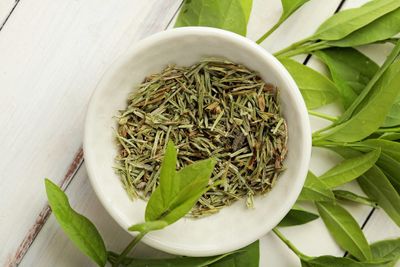Tea Plants in the Garden
The most familiar and widely grown tea plants include two common varieties: Camellia sinensis var. sinensis, used primarily for white and green tea, and Camellia sinensis var. assamica, used for black tea. The first is native to China, where it grows at very high elevations. This variety is suitable for moderate climates, generally USDA plant hardiness zones 7 through 9. The second variety, however, is native to India. It isn’t frost-tolerant and grows in tropical climates of zone 10b and above. There are countless cultivars derived from the two main varieties. Some are hardy plants that grow in climates as far north as zone 6b. In colder climates, tea plants do well in containers. Bring the plants indoors before temperatures drop in autumn.
Growing Tea Plants at Home
Tea plants in the garden require well-drained, slightly acidic soil. An acidic mulch, such as pine needles, will help retain the proper soil pH. Full or dappled sunlight is ideal, as are temperatures between 55 and 90 F. (13-32 C). Avoid full shade, as tea plants placed in the sun are more robust. Otherwise, tea plant care isn’t complicated. Water plants frequently during the first two years – generally two or three times per week during the summer, using rainwater whenever possible. Allow the soil to dry slightly between waterings. Saturate the rootball but don’t overwater, as tea plants don’t appreciate wet feet. Once the plants are well established, continue to water as needed during hot, dry weather. Spray or mist the leaves lightly during dry periods, as tea plants are tropical plants that thrive in humidity. Pay close attention to tea plants grown in containers, and never allow the soil to become completely dry. Fertilize in spring and early summer, using a product formulated for camellia, azalea, and other acid-loving plants. Always water well before feeding tea plants in the garden, and immediately rinse any fertilizer that lands on the leaves. You can also use a water-soluble fertilizer.
